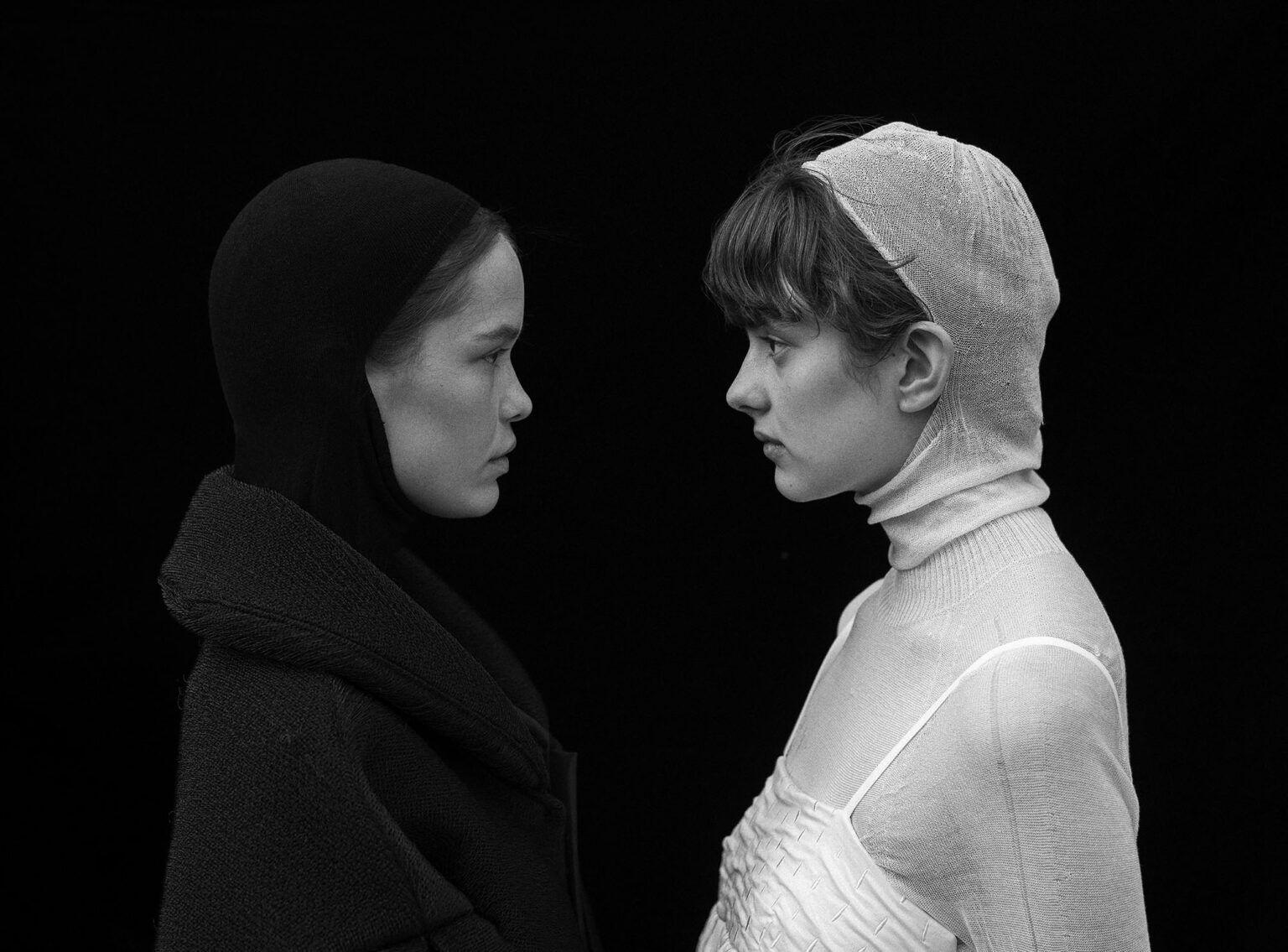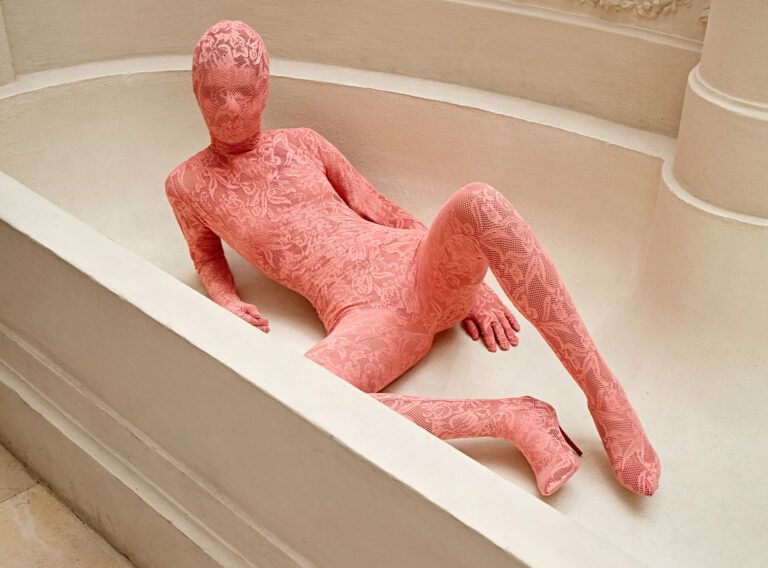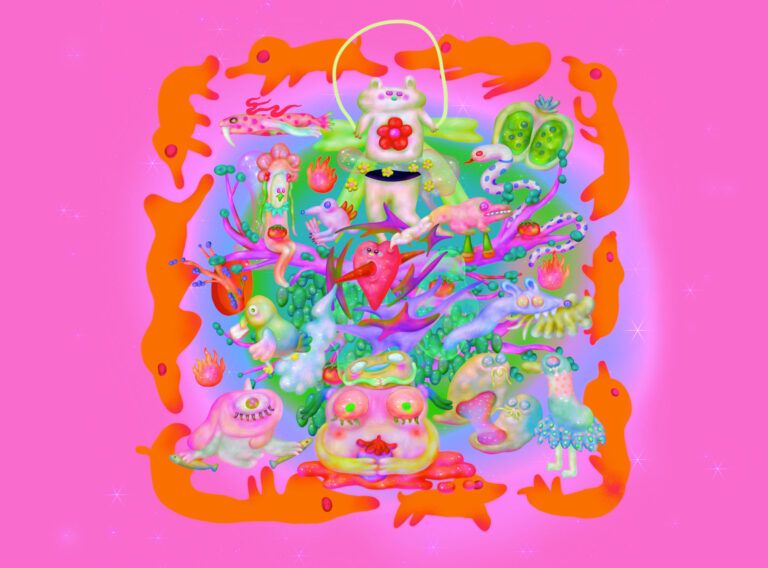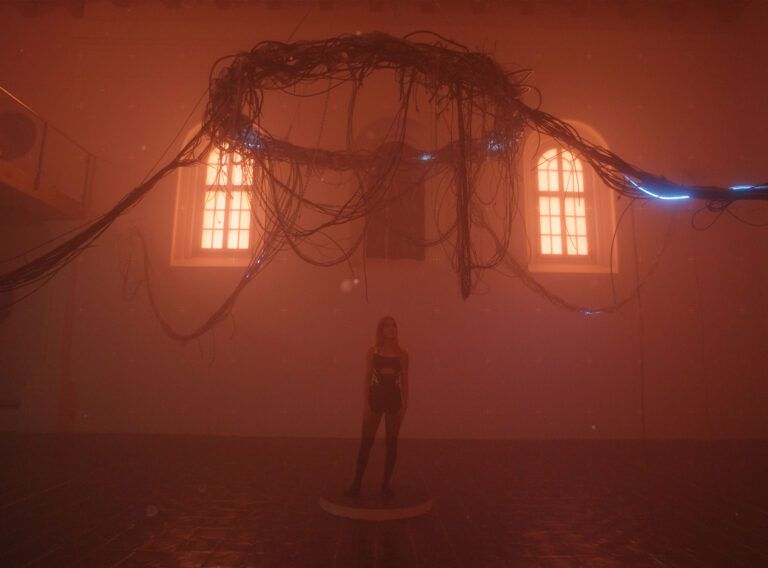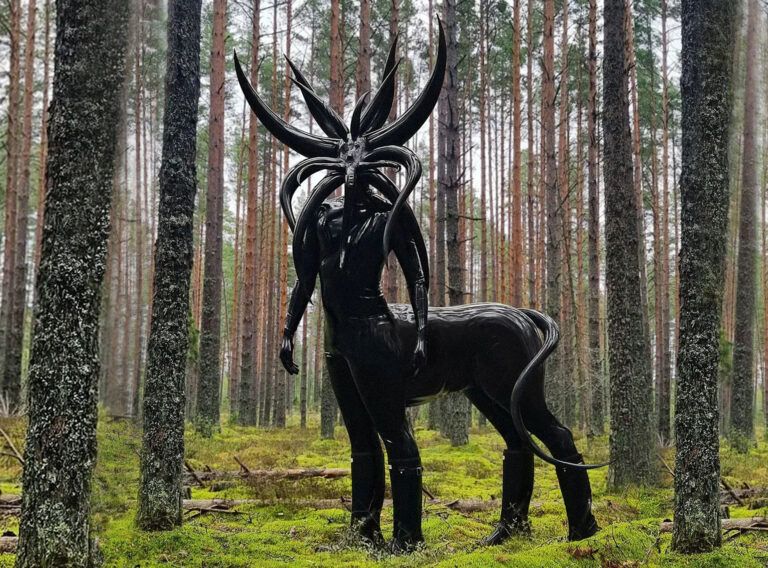The collection alludes to the author’s cultural and personal roots, working as a counterpole to mass production and a general eclecticism in trends. Each of the women represents a different generation, and as such the models also reflect the historical development of fashion. The individual outfits were made using period tailoring techniques in combination with embroidery, knitting and other high-tailoring methods. The collection entails pieces for Veronika, Otília, L’udmila, Andrea and Greta. The collection’s name comes from a folk song in the Gaidelian dialect typical of the Kľačno region, where all the chosen wearers trace their roots. It translates as “Pretty Girls”.
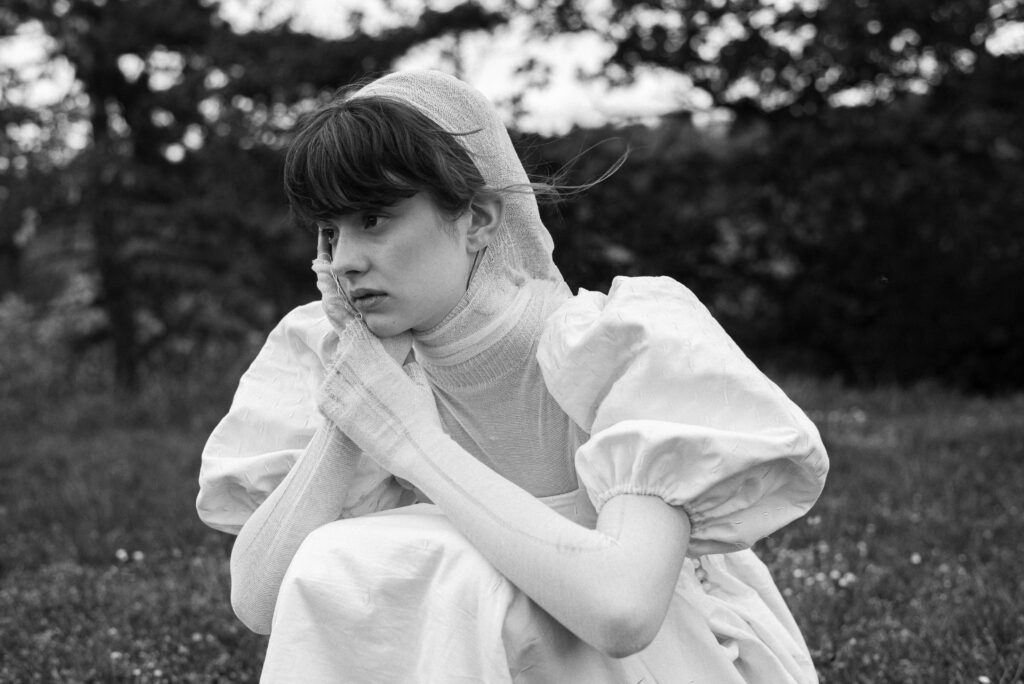
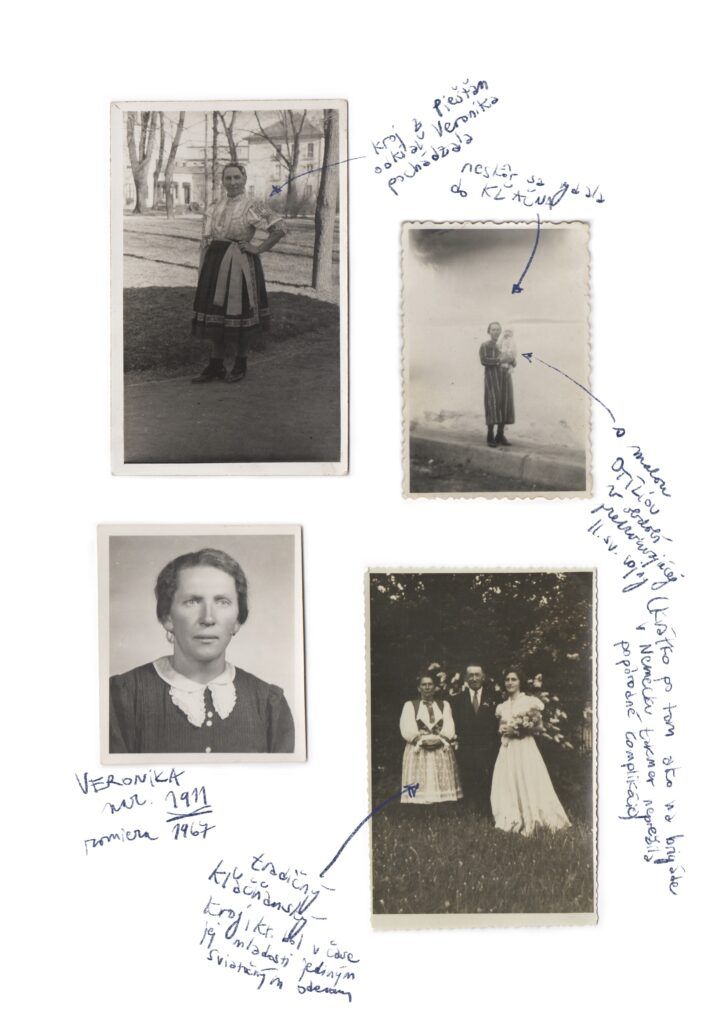
VERONIKA: The collection’s story begins already in 1911 with the birth of Veronika’s grandmother. Veronika’s model is inspired by her traditional folk costume, which was the most valuable item a girl owned.
OTÍLIA: The next model is dedicated to Otília’s grandmother, who worked as a tailor. As such, her craft is reflected even in personal preferences, which included quality workmanship, an attentive eye to details and comfort. The model in the form of Otília’s favorite jacket is thus founded in purity, modesty and discretion.
L’UDMILA: The main elements of the model of L’udmila’s mother are professionality and orderliness. It reflects the atmosphere of the 90s, when she, a manager in the new, post-revolution environment, had to make sure she wore proper professional clothes – in her case, it’s a work suit.
ANDREA: The penultimate model is dedicated to Andrea’s older sister. The clothes she wore to differentiate herself from the mainstream were later substituted by a desire for simplicity and comfort with the beginning of maternal duties. However, her taste is characterized by minimalism, which is reflected in her model in combination with an air of comfortability and a 90s style.
GRETA: The final piece is inspired by the personal style of the niece Greta, the family’s youngest member. It is based on the clothes of princesses from her favorite fairy tales; as such, these are dresses with petticoats with rich frills, supplemented by gloves in the style of Cinderella.
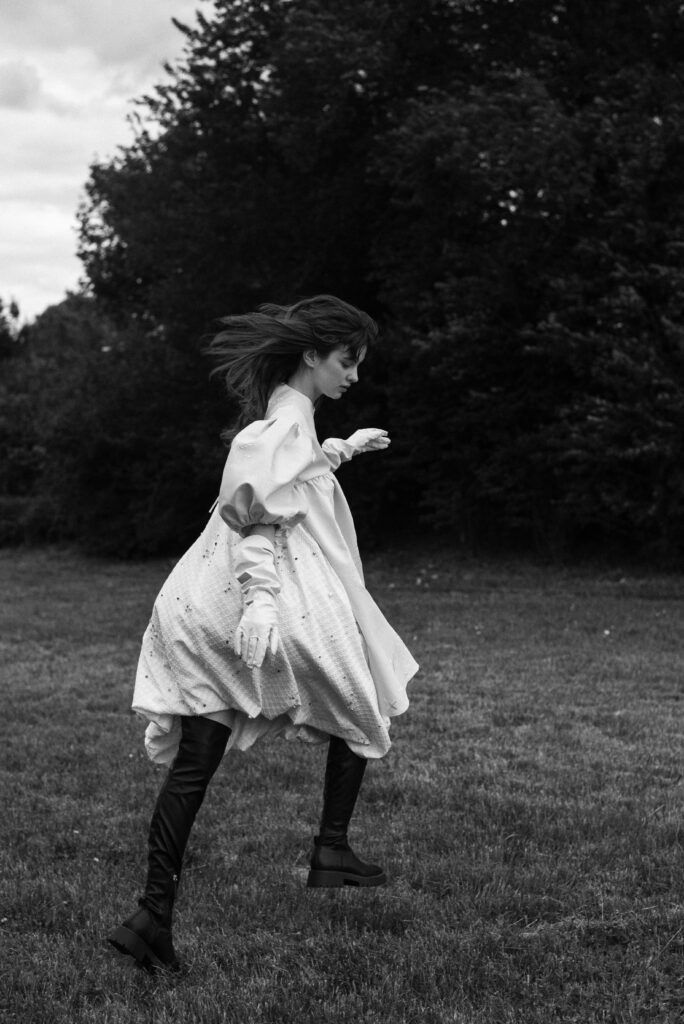
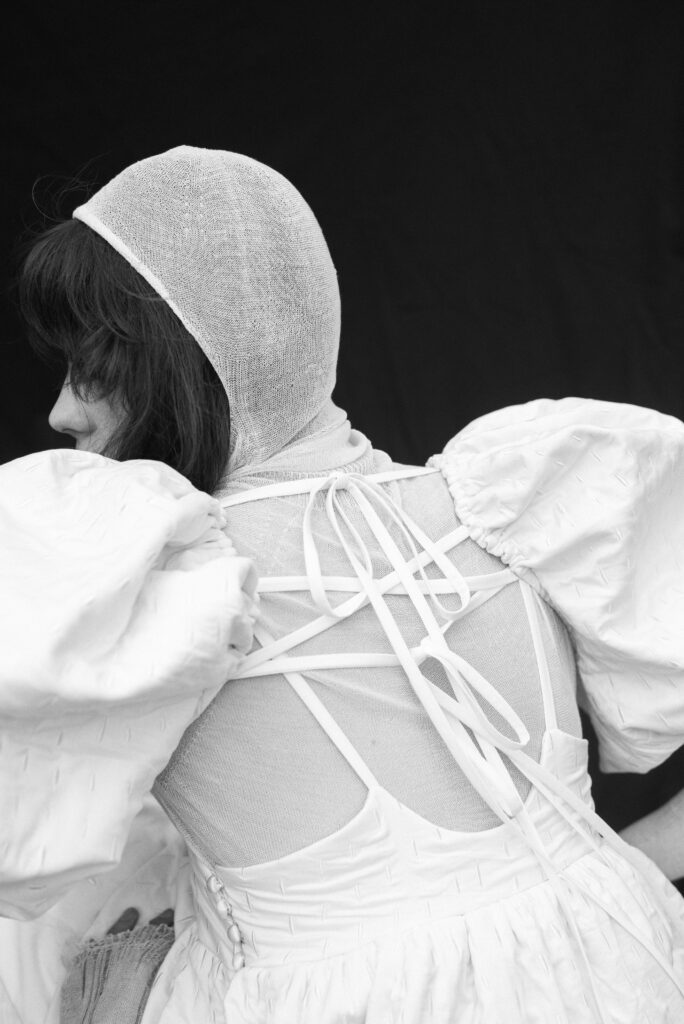
The only black outfit represents both the beginning and end to the collection. First, the color black symbolizes my desire to escape. It represents the feeling of being hidden in a crowd, providing a pleasant feeling of emptiness, opening the door to mysteries and preparing one for the unknown. However, black also symbolizes protection from external emotional stress, projects authority and provides the wearer with a feeling of confidence. This eventually provides me with a sufficient degree of satisfaction which was so absent from the collection at the beginning. Cognitive therapists often paraphrase the quote of the Roman stoic Epictetus: Things do not bother us the way they are, but the way they seem. That is why the process of making the entire collection had a literally therapeutic effect on my initial aversion and creative block. At the beginning I skeptically relied on the question posed by the Italian art critic Gillo Dorfles: to what extent are we allowed to interpret clothes in all their shapes and sizes as a symbol of human personality, and to what extent is it even possible to present this personality with such a superficial and unstable factor like clothes? I chose to answer in a way that I hope is understandable. By focusing on specific people and their clothing preferences, I studied the ratio of individuality against the anonymous character of clothing archetypes. This topic is closely linked with the concept of authenticity, which was succinctly defined by the American anthropologist Joseph G. Feinberg. He considers authenticity a specific way of sensitiveness, or a perspective on experience, which opens this experience to critical interpretation. He also uses the example of the folk environment – dancers dancing for their own pleasure, that is, not dancing in a way to satisfy somebody else, but only themselves and their dance partner. I analogically “dance” not only for myself in relation to fashion work, but also for the legacy of the women whose stories represent the foundation of my inspiration.

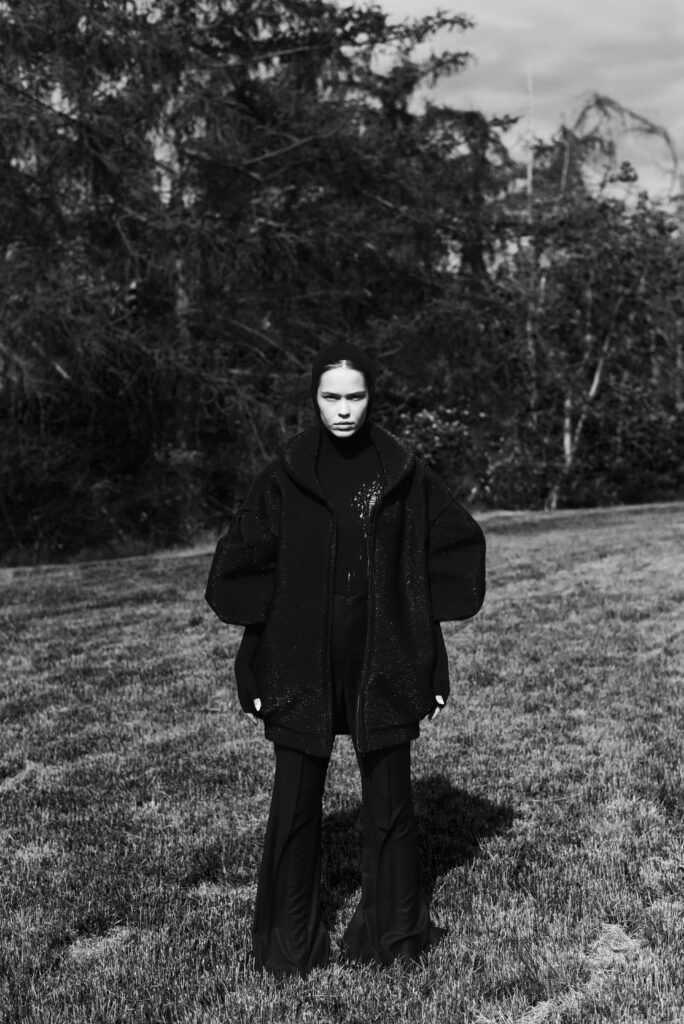
INTERVIEW
The Schena Maaro collection, which concludes your studies, is a return to family roots and a poetic retort to creative block. If you look back at your studies, what motivated you at the beginning compared to now?
These were uncharted waters in the beginning, ones I idealized way too much ever since I was a child. When one doesn’t know what they are getting into but just feel they want to do it, they need nothing else. Only with time did the first obstacles emerge, along with the epiphanies that what I was always doing with enthusiasm was far from ideal. The final year was mentally the hardest one. My doubts about my future direction started weighing down on me, alongside the pressure to perform well and a general exhaustion of what society had been going through since the start of the pandemic. In the end, it was only my chosen topic what motivated me. It was essential for me to present the stories of the women important to me in a dignified manner. My greatest reward were then their reactions, and last but not least, also those of the exhibition visitors, who did not have a difficult time understanding what I was trying to say with the exhibition.
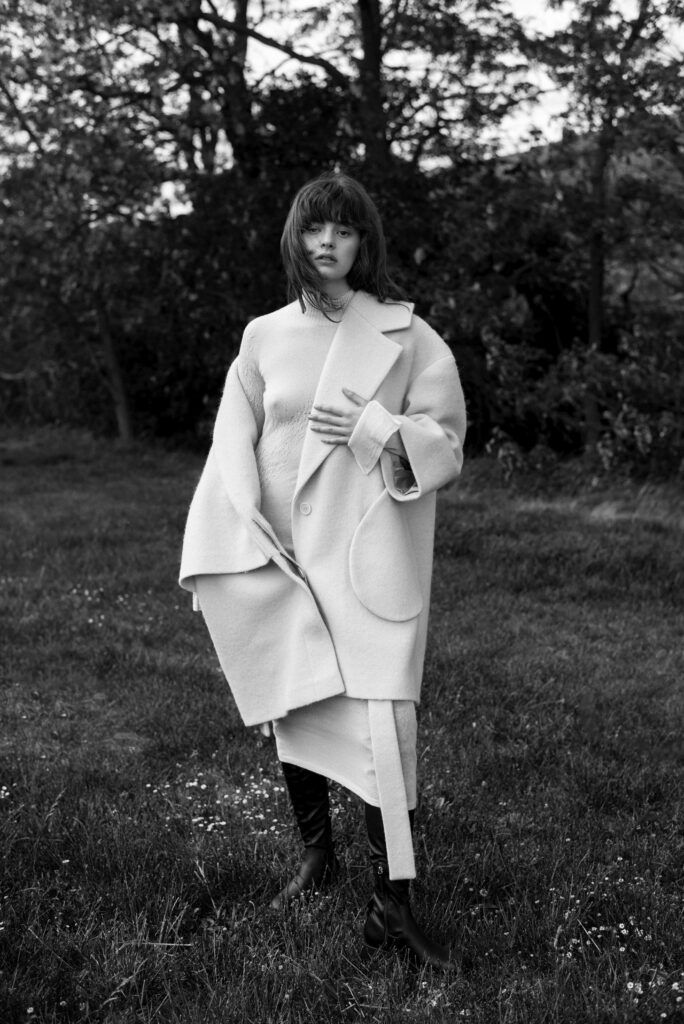
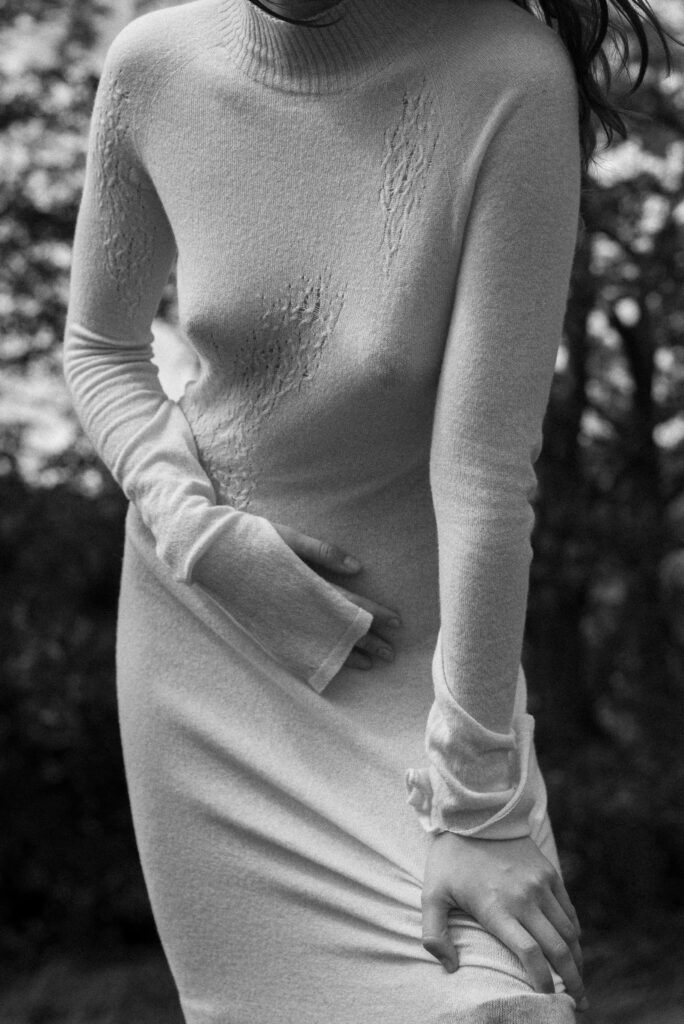
In which phase of the creative process do you feel the most freedom?
I mainly enjoy creating the concept, the following research and defining the main thesis. I always had a special liking for narratives – even when I was a child, I would come up with my own illustrated stories, and now I try to express this through fashion. Even taking photographs of the final editorial provides me with great freedom, and it always greatly enhances the general poetic aspect.
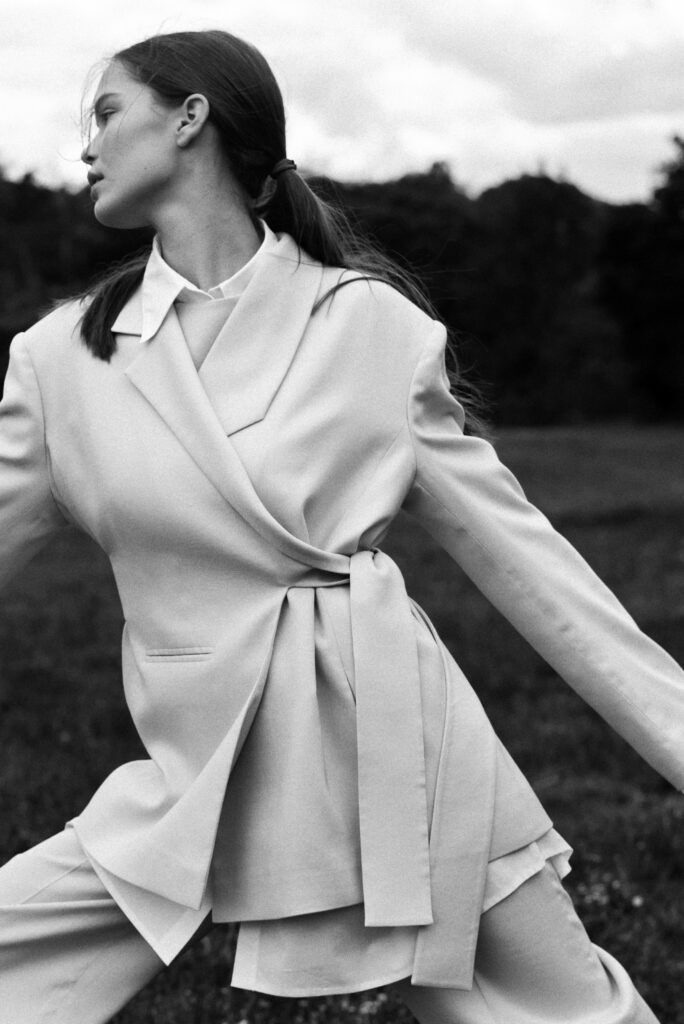
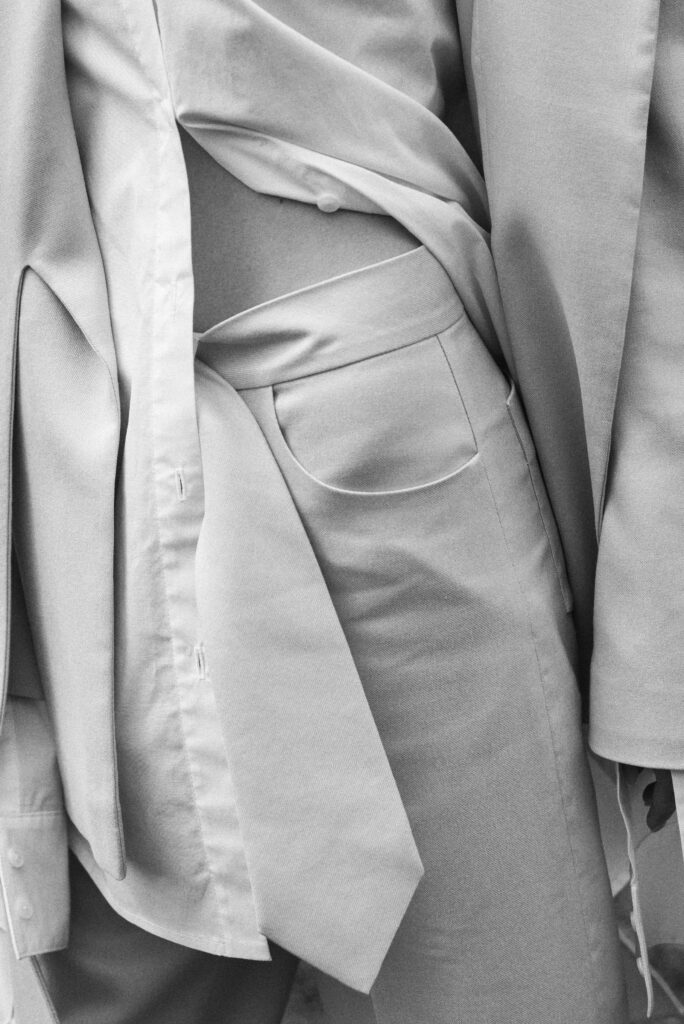
Which of the women is the closest to you and why?
Generationally, my sister is the closest to me, and she is also my best friend; nonetheless, all of them are close to me. Each in their own natural manner. One of the women I never met was grandmother Veronika. In the photograph that I like the most from the editorial, there are two models gazing into each other’s eyes in front of a black background. They are wearing outfits that reflect me and my grandmother. I believe that being close to her would have been quite unique as well.
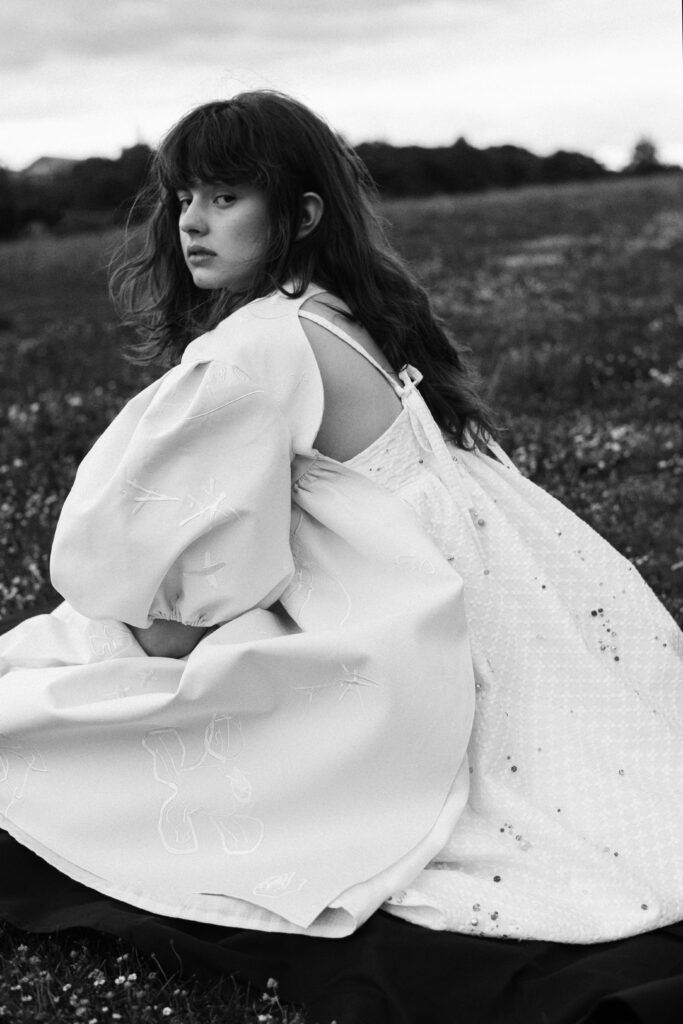
You also pursue photography. What does this medium provide you in comparison to fashion?
I think about how a collection will be photographed from its very conception and definition. Producing a single collection is a long-term process and photography is an often undervalued part of the overall visual appeal. I do believe however that both activities are equal and I approach both intuitively. Last but not least, photography also allows me to relax away from the designer routine, and it also works the other way around. I enjoy collaborating with other designers by taking photos of their collections. Connecting my vision with the perspective of a designer or stylist is often an enriching experience. I hope this applies both ways. 🙂
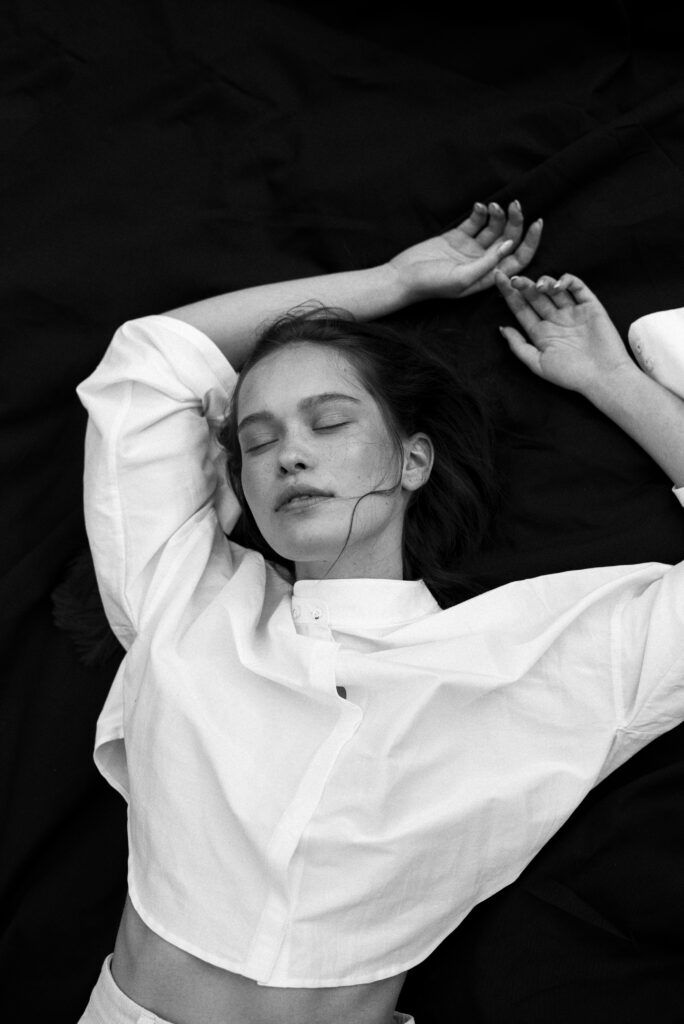
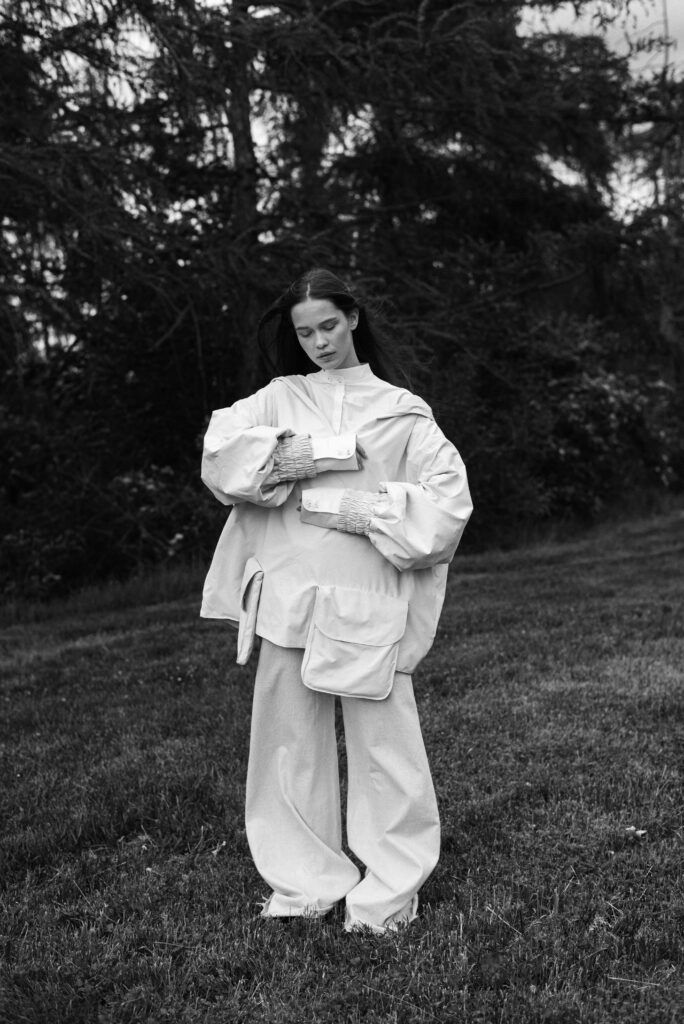
The concept of your work is founded on the generations of women from your family. I am curious as to why you haven’t chosen several generations of models for the final collection photoshoot?
The clothes themselves and the accompanying stories evidence the individuality of the different generations, which is why I didn’t feel a need to demonstrate it through the models themselves as well. In addition, I mainly imagine the protagonists themselves wearing the outfits, so finding a replacement for my grandma or mom in the form of models of their age seemed like a pointless imitation.
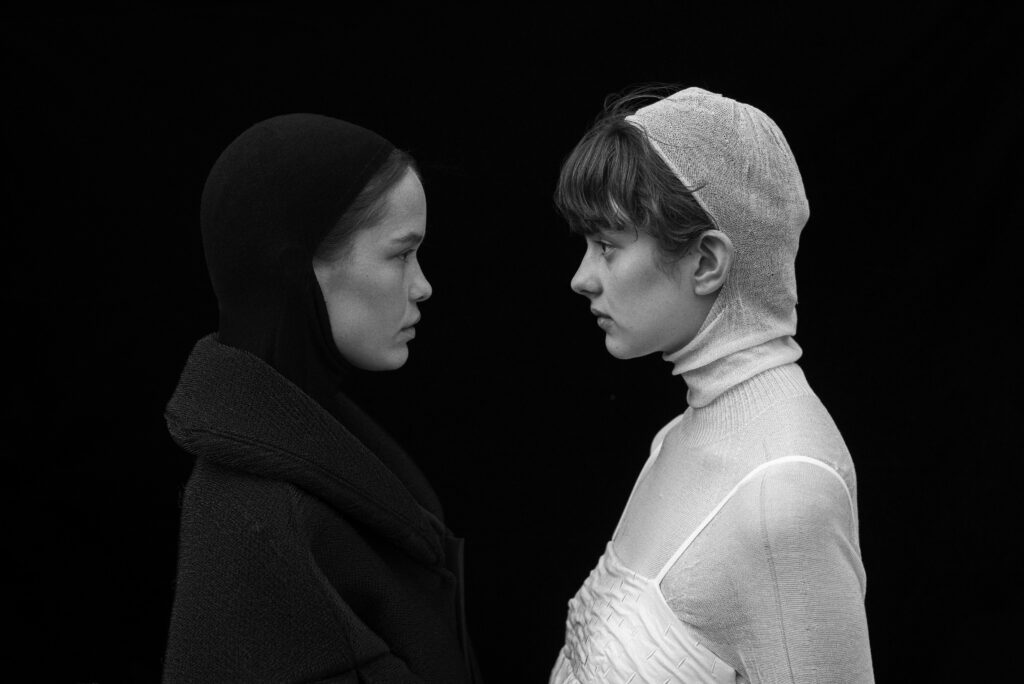
What do you plan to do after finishing your studies?
I will be going for a work residency in Copenhagen in September for six months. Through this I will get to participate in the entire process of developing a seasonal collection, from the initial moodboards to fine-tuning the last details before Fashion Week. I want to leave my plans for the time after the residency open-ended.
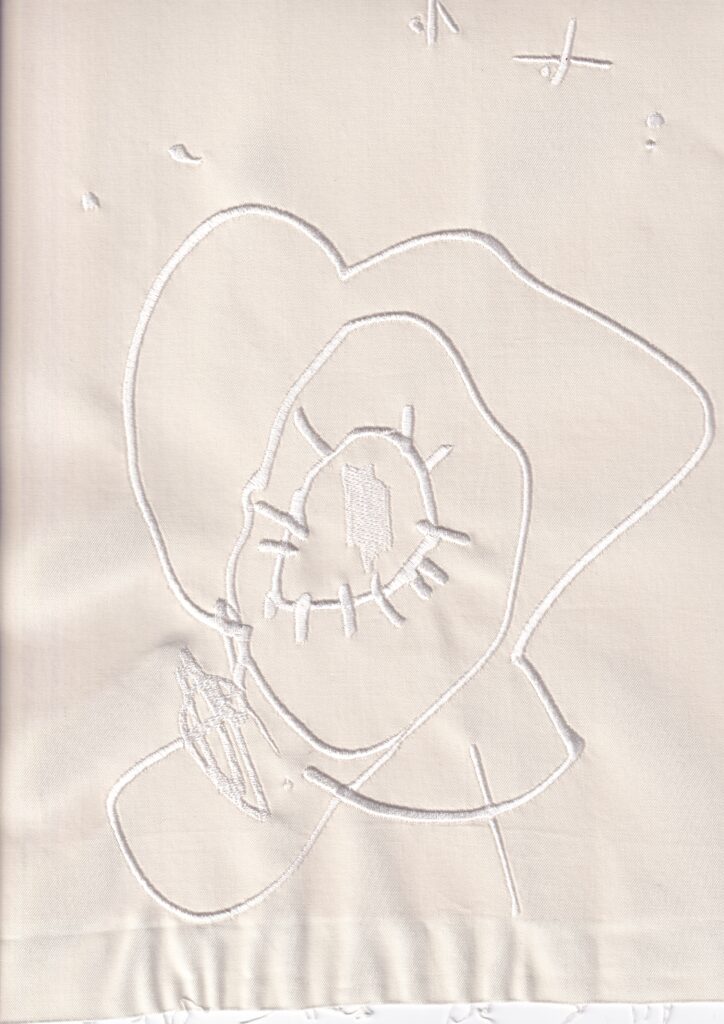
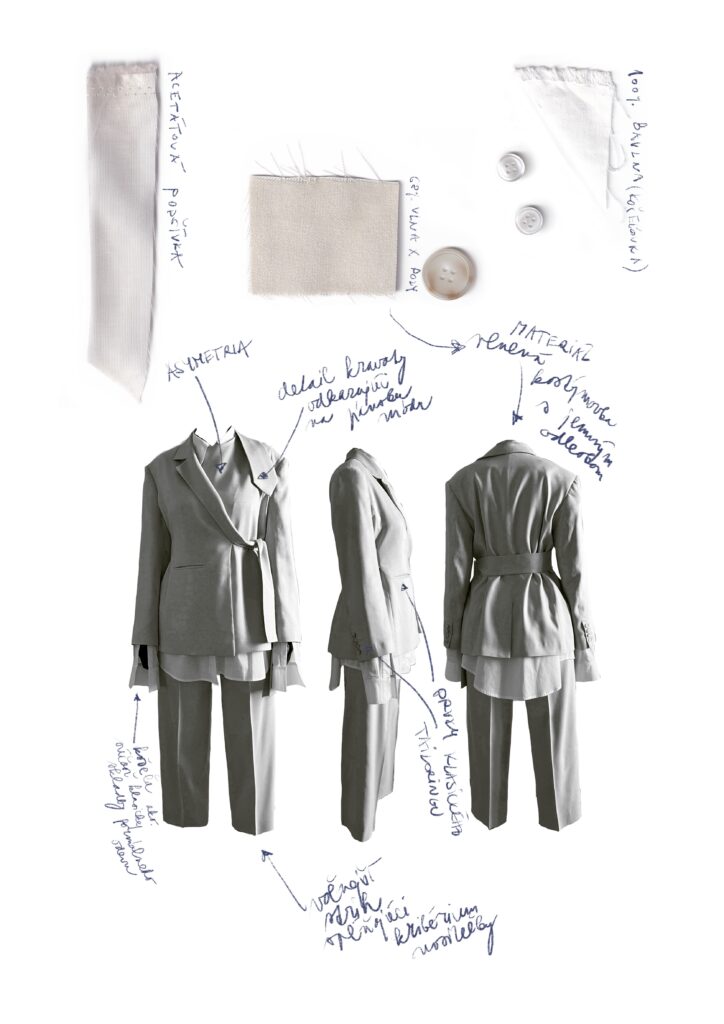
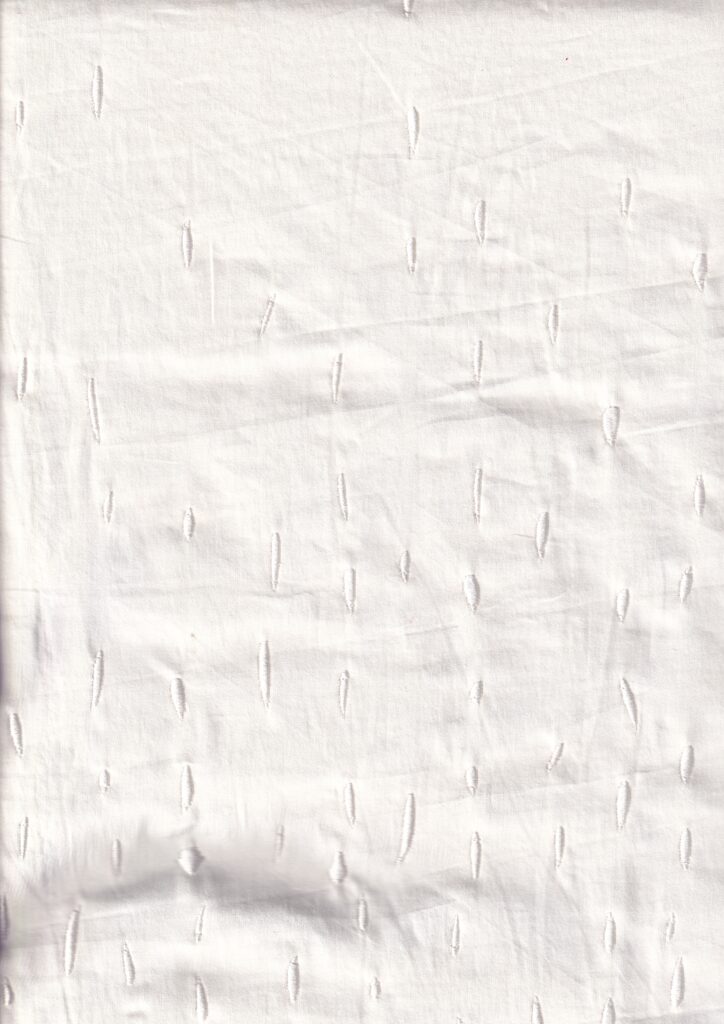
Our current theme is Family Business, so my last question is this: how did your family influence and support your plans to become a fashion designer and start your own brand?
They always fully supported me with all their strength, for which I am eternally grateful to them.
